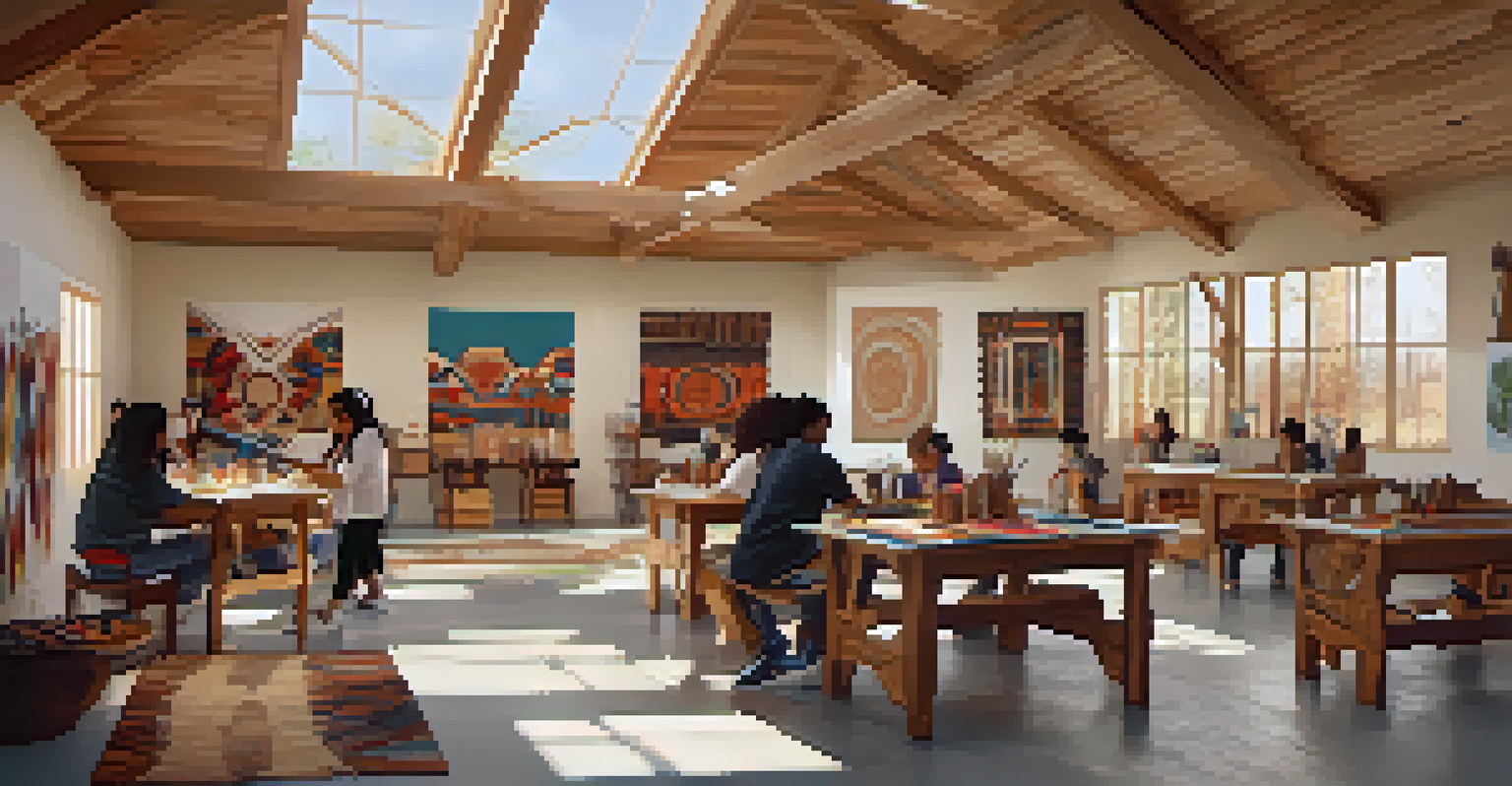Integrating Indigenous Knowledge into Modern Curriculum Design

Understanding Indigenous Knowledge and Its Importance
Indigenous knowledge refers to the understandings, skills, and philosophies developed by Indigenous peoples over generations. This knowledge is often rooted in a deep connection to the land and community, making it unique and invaluable. Recognizing its importance is crucial as it provides insights into sustainability, biodiversity, and cultural diversity that can enhance modern education.
Indigenous knowledge is not just a set of practices, but a way of being in the world.
Integrating Indigenous knowledge into curriculum design not only enriches the learning experience but also fosters respect for different worldviews. It encourages students to appreciate the varied perspectives that exist within our society. By including these teachings, educators can promote a more inclusive environment that values all cultures.
Moreover, Indigenous knowledge can serve as a powerful tool for critical thinking. It challenges students to rethink their assumptions and engage in deeper discussions about history, ethics, and social justice. This integration paves the way for a more holistic educational approach that benefits everyone.
Connecting Curriculum with Local Indigenous Communities
One effective way to incorporate Indigenous knowledge is by collaborating with local Indigenous communities. This partnership can provide educators with authentic resources and perspectives that are often overlooked in traditional curricula. Engaging with community members allows students to learn first-hand about their culture, traditions, and histories.

Field trips and guest speakers from Indigenous backgrounds can bring lessons to life. Imagine students exploring local ecosystems with an Indigenous elder who shares stories and teachings about the land they inhabit. Such experiences can create lasting connections and deepen understanding of the content being taught.
Value of Indigenous Knowledge
Indigenous knowledge offers unique insights into sustainability and cultural diversity, enhancing modern education.
Additionally, these collaborations can foster a sense of responsibility and stewardship among students. By learning about Indigenous approaches to land management and sustainability, students can develop a deeper appreciation for environmental issues that affect their communities today.
Incorporating Indigenous Perspectives in Subject Areas
Integrating Indigenous knowledge doesn't have to be limited to social studies; it can enrich various subjects, from science to art. For instance, in science classes, students can learn about traditional ecological knowledge, which encompasses sustainable practices honed over centuries. This approach can help bridge the gap between Indigenous wisdom and contemporary scientific methods.
Education is the most powerful weapon which you can use to change the world.
In the arts, students can explore Indigenous storytelling and visual arts, discovering how these forms reflect cultural values and historical narratives. By incorporating these elements into their projects, students enhance their creativity while gaining respect for different artistic expressions.
Mathematics can also benefit from Indigenous perspectives, as students might explore Indigenous counting systems or geometric patterns found in traditional crafts. This multifaceted integration ensures that Indigenous knowledge is woven into the fabric of the curriculum, creating a richer educational experience.
Creating Culturally Responsive Learning Environments
A culturally responsive classroom is one where all students feel valued and included, and integrating Indigenous knowledge plays a pivotal role in achieving this. It's essential for educators to create an environment that honors Indigenous perspectives and acknowledges historical contexts. This approach fosters a sense of belonging for Indigenous students and educates others about the importance of diverse cultures.
Teachers can start by incorporating Indigenous symbols, languages, and stories in their classroom decor and materials. This representation can help students recognize the richness of Indigenous cultures and encourage open discussions about identity and heritage. When students see their cultures reflected, they are more likely to engage meaningfully in their education.
Collaboration with Communities
Partnering with local Indigenous communities enriches curriculum and fosters authentic learning experiences for students.
Moreover, incorporating Indigenous knowledge demonstrates a commitment to social justice and equity in education. It challenges the dominant narratives and empowers students to explore their own identities while respecting the identities of others. This shift can lead to greater empathy and understanding among peers.
Addressing Challenges in Integration Efforts
While integrating Indigenous knowledge into modern curricula is beneficial, it comes with its challenges. One significant hurdle is the lack of resources or training for educators on how to effectively incorporate these perspectives. Many teachers may feel unprepared to tackle Indigenous topics due to a lack of familiarity or confidence.
Additionally, there may be resistance from stakeholders who are accustomed to traditional curricula. Overcoming this resistance requires open dialogue and education about the benefits of including Indigenous knowledge. Building support among school administrators, parents, and the community can create a more inclusive approach to curriculum development.
Finally, it’s crucial to approach the integration of Indigenous knowledge with sensitivity and respect. Misrepresentation or oversimplification can perpetuate stereotypes and harm Indigenous communities. Educators must be committed to ongoing learning and collaboration with Indigenous peoples to ensure that their knowledge is honored and accurately represented.
Evaluating the Impact of Integrated Curriculum
To gauge the effectiveness of integrating Indigenous knowledge into the curriculum, it’s important to establish clear evaluation metrics. These can include student engagement levels, feedback from Indigenous communities, and assessments of student understanding of the material. Monitoring these aspects helps educators refine their approaches and ensure that the integration is meaningful.
Qualitative data, such as student reflections and discussions, can provide valuable insights into how Indigenous knowledge impacts learning experiences. Educators can encourage students to share their thoughts on how these teachings have influenced their perspectives on culture, community, and environmental responsibility.
Creating Inclusive Classrooms
Integrating Indigenous perspectives promotes cultural responsiveness and social justice in educational environments.
Ultimately, continuous evaluation allows schools to celebrate successes and address any shortcomings in their integration efforts. This iterative process not only enhances the curriculum but also strengthens relationships with Indigenous communities, ensuring that the collaboration remains relevant and beneficial.
Future Directions for Curriculum Design
As education evolves, so too must our approaches to curriculum design, especially regarding Indigenous knowledge. The future of education calls for a more inclusive and equitable framework that acknowledges and utilizes Indigenous perspectives. This shift is not just beneficial for Indigenous students but enriches the learning experience for all.
Emerging technologies can play a role in this transformation. Virtual reality, for example, can help students experience Indigenous cultural sites and practices in immersive ways. By leveraging technology, educators can reach a broader audience and engage students in innovative ways that honor Indigenous knowledge.

Moreover, fostering partnerships between educational institutions and Indigenous organizations can ensure that curriculum development remains collaborative and relevant. By working together, we can create a dynamic educational landscape that respects and integrates Indigenous voices for generations to come.